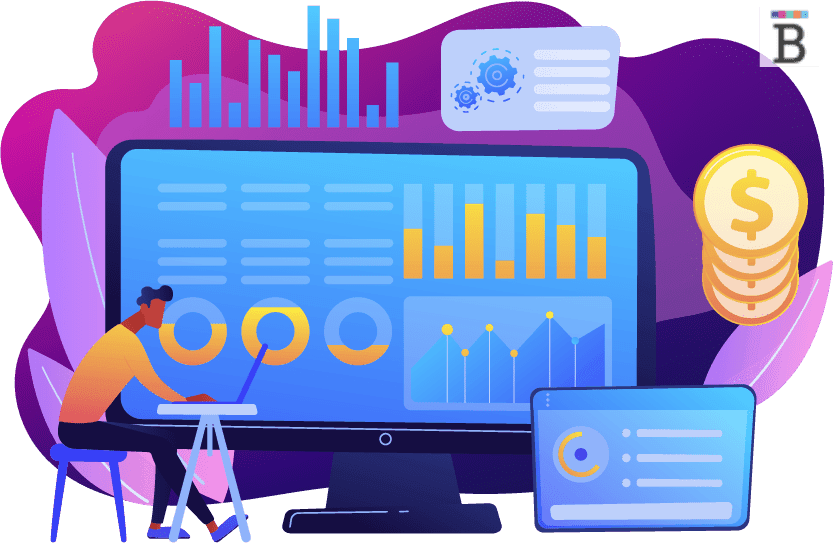Business News Daily provides resources, advice and product reviews to drive business growth. Our mission is to equip business owners with the knowledge and confidence to make informed decisions. As part of that, we recommend products and services for their success.
We collaborate with business-to-business vendors, connecting them with potential buyers. In some cases, we earn commissions when sales are made through our referrals. These financial relationships support our content but do not dictate our recommendations. Our editorial team independently evaluates products based on thousands of hours of research. We are committed to providing trustworthy advice for businesses. Learn more about our full process and see who our partners are here.
How to Track and Manage Lead Sources
To make the most of your lead generation efforts, you need to track where your customers are coming from. Here’s how to do it.

Table of Contents
It can be hard to drive new business if you don’t know how customers find you. That’s where identifying and monitoring your lead sources comes in. Lead sources can be anything from word-of-mouth referrals to search engine results pages (SERPs) to social media ads, and there are many ways to track where your leads are coming from. This guide explains how to think about lead sources and some techniques for improving what you know about where your customers come from. The results can help you grow your business and spend wisely when it comes to marketing and advertising budgets.
What is a lead source?
A lead source is the channel through which a lead first learns about your company and engages with your brand. If a lead has discovered your business from SERPs, then that search engine ― and, by extension, your search engine optimization (SEO) practices ― are your lead source. Similarly, a lead source could be a social media platform where a user saw an ad for your product or service and clicked through to your landing page.

When tracking and managing lead sources, you should be careful not to conflate lead sources and lead methods. A lead source is the initial point of lead generation while a lead method is the avenue through which you first contact your potential customer.
For example, if you call a lead who contacted you after seeing your website on SERPs, then the search engine they used is your lead source and calling that potential customer is your lead method. More succinctly, lead sources are lead opportunities and lead methods make good on those opportunities.
Types of lead sources
These are some of the many possible lead sources in business:
- Search engines: Leads who find your company through search results could be valuable, especially ones who click through to your page. Your click-through rate from the SERP is a key indicator of how well you’re driving organic traffic.
- Links from other websites: A thorough SEO strategy includes improving your website’s authority. As you work on this, you may begin appearing high enough on SERPs that other websites will link to yours in their content. Each of these links is a potential lead source.
- Listing websites: In some cases, SEO tactics can also drive traffic to your listings on review websites. The more traffic your listings get, the more potential customers you can attract.
- Cold calls: Anyone who calls your company out of the blue with product or service inquiries is a sales lead ― and a great one at that. Since your cold caller already has at least some interest, they should be easier to move along the sales funnel than other leads.
- Direct mail: You’re probably still seeing direct mail lead sourcing regularly despite the rapid growth of digital marketing. Anytime you receive a letter or postcard in the mail advertising a product or service, that’s postal mail lead sourcing.
- Traditional advertisements: Like direct mail, traditional advertising on radio, television and billboards remains prevalent despite the digital era.
- Events: Networking events, trade shows, seminars and other events are great places to meet people. Some of these new connections may be interested in your products and services.
- Referrals: Even if the people you meet at networking events don’t need your products or services, they might know people who do. If so, they can refer these people to your company. Your current and former clients may do the same when they realize that someone they know needs a trustworthy business to provide products or services like yours.
- Social media: Like search engines, social media can teach anyone with an internet or data connection about your company. You can also use your social media channels to promote new developments or discounts that draw leads to your business.
- Email newsletters: Whether you buy an email list or build one from scratch, every email newsletter you send is a chance to generate more business. Email newsletters are especially useful for retaining repeat customers who have recently stopped buying as much. These customers also count as leads since they have temporarily stopped being sources of revenue but may soon bring you earnings again.
- Pay-per-click (PPC) advertising: When you invest money in PPC, your company ranks highly on SERPs regardless of its organic SEO. As such, PPC is often seen as buying new leads, thus making it a powerful lead source in certain cases.

How does a lead source work in lead generation?
Lead sources tie into lead generation through the practice of lead source attribution. In lead source attribution, you note which channel generated a particular lead. The more you attribute your lead sources, the better you can tell how strongly your lead sources are generating leads. With this information, you can adjust your lead generation efforts to target the sources that bring in the most results.
Regardless of attribution, lead sources are the start of your lead generation process. Once your source attracts someone to your website or other content, you can use business intelligence data, such as bounce rates and screen time, to qualify your leads. Once the leads are qualified, outreach can begin ― and, hopefully, conversion will follow.
How to track and manage lead sources
Tracking lead sources is the key to refining your lead generation process. Here are several tips to ensure you are tracking and managing your sources effectively.
1. Use CRM software.
Tracking and managing lead sources properly is much tougher without customer relationship management (CRM) software to store all your customer information and act as a database. In your CRM, you should be able to assign each of your leads a source from a customizable list. Check out our picks for the best CRM software to get an idea of which solutions do the best job when it comes to managing lead sources.
2. Go granular.
Listing a lead source as “social media” is a good start but it won’t always tell you enough. With so many different social media channels, you want to know if your lead came from Instagram or Facebook. Get granular ― keep “social media” as the lead source but include subcategories for every social media initiative you undertake.
3. Track CTAs with UTM parameters.
Calls to action (CTAs) are crucial to lead generation and if you’re running multiple lead generation campaigns, you’ll want to track all your CTAs. You can do this by attaching Urchin Tracking Module (UTM) parameters to your CTA links. This way, you’ll know which of your CTAs is your most effective lead source.
UTM parameters include information like campaign source, campaign medium and campaign name, which can help you keep tabs on which ads or marketing campaigns are driving leads. Generally, they are tracked by adding a pixel or shortcode to your campaign assets so you’ll know where a user saw your message and how they behaved after receiving it.
Tracking UTM parameters can help you determine whether your campaign was a success or not. Either way, these insights are key to planning future campaigns that will be worth the investment of time and money.
4. Keep your attribution of lead sources consistent and accurate.
A lead source is a potential customer’s introduction to your brand. So, if a lead subsequently engages with your company, don’t change their source in your records to reflect this subsequent interaction. Your lead source is always the customer’s first point of interaction with your company, never anything that comes afterward. Similarly, your lead source should never be listed in your attribution records as a specific marketing or lead generation campaign.
5. Connect your lead scoring and lead sourcing processes.
Once you understand which of your lead sources converts the most leads, use this insight to inform your lead scoring processes. If you discover that one lead source converts more often than another, then score leads generated through that source more highly.
6. Check your results.
A lead source that has converted highly for years might stop converting gradually or instantly as well as it once did. Check lead sources quarterly to assess how well they are converting and as you do, make sure your lead sources are logged properly. Hand in hand, conversion rates and lead sources can shed plentiful insights as to how you best attract customers ― and how you should shape your lead generation campaigns to keep doing just that.
Your lead sources are what drive new business
Understanding your strongest lead sources and how well each convert can help you better plan your future marketing and advertising campaigns, increasing your return on investment. After all, without understanding where your audience is active and how likely they are to convert on each channel, it can be hard to drive new leads into your sales funnel. However, by refining the information you have on your lead sources and targeting those that perform best, you can drive more sales with less effort, saving money and boosting revenue in the process.
Jacob Bierer-Nielsen also contributed to this article.













